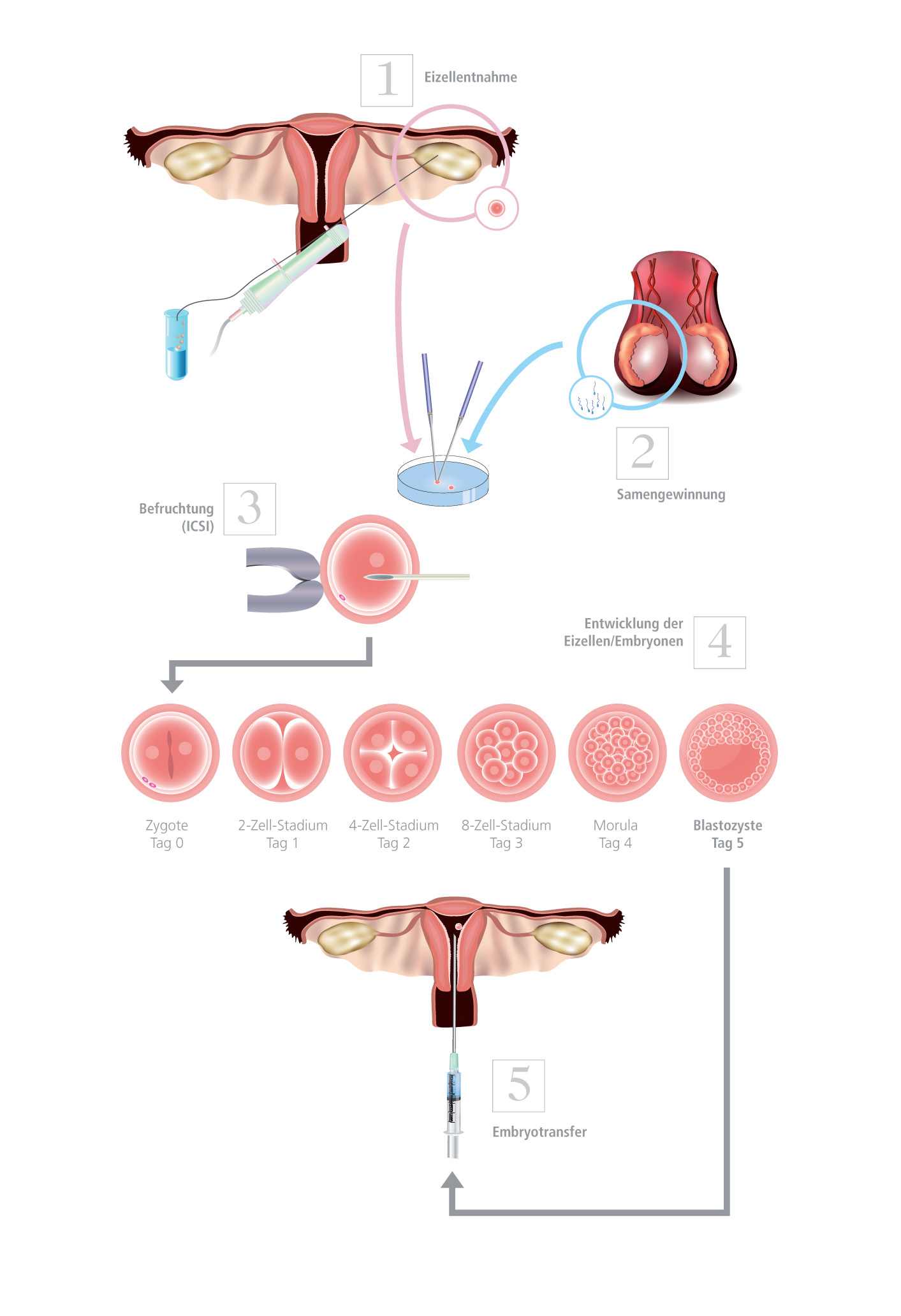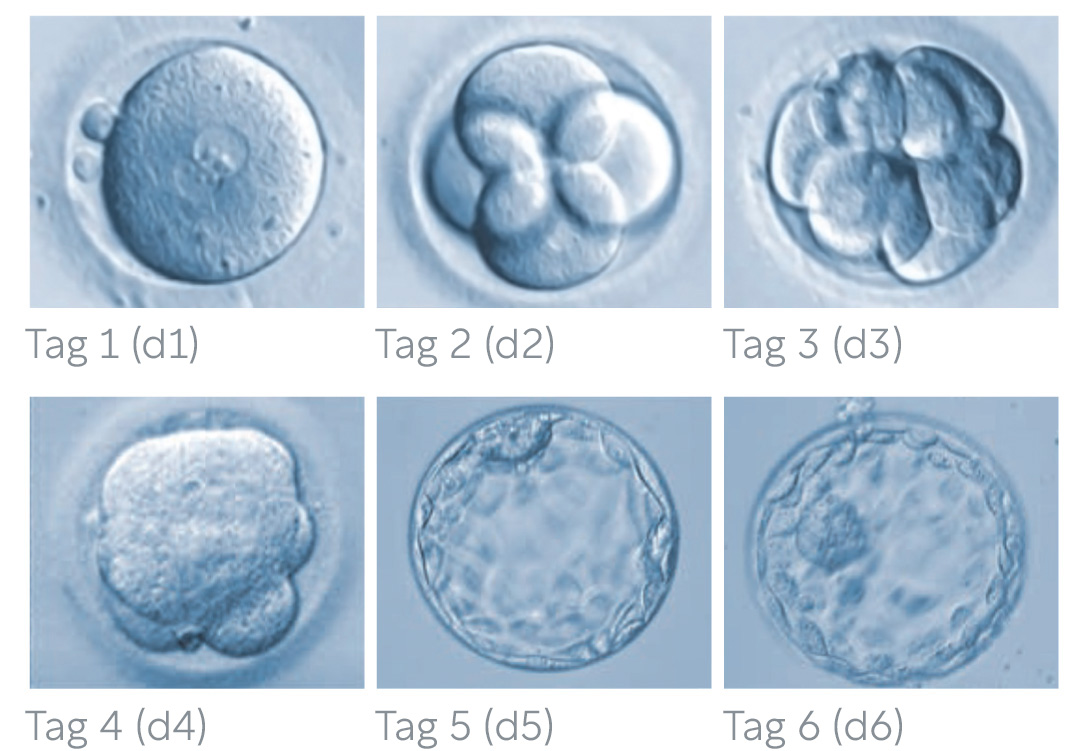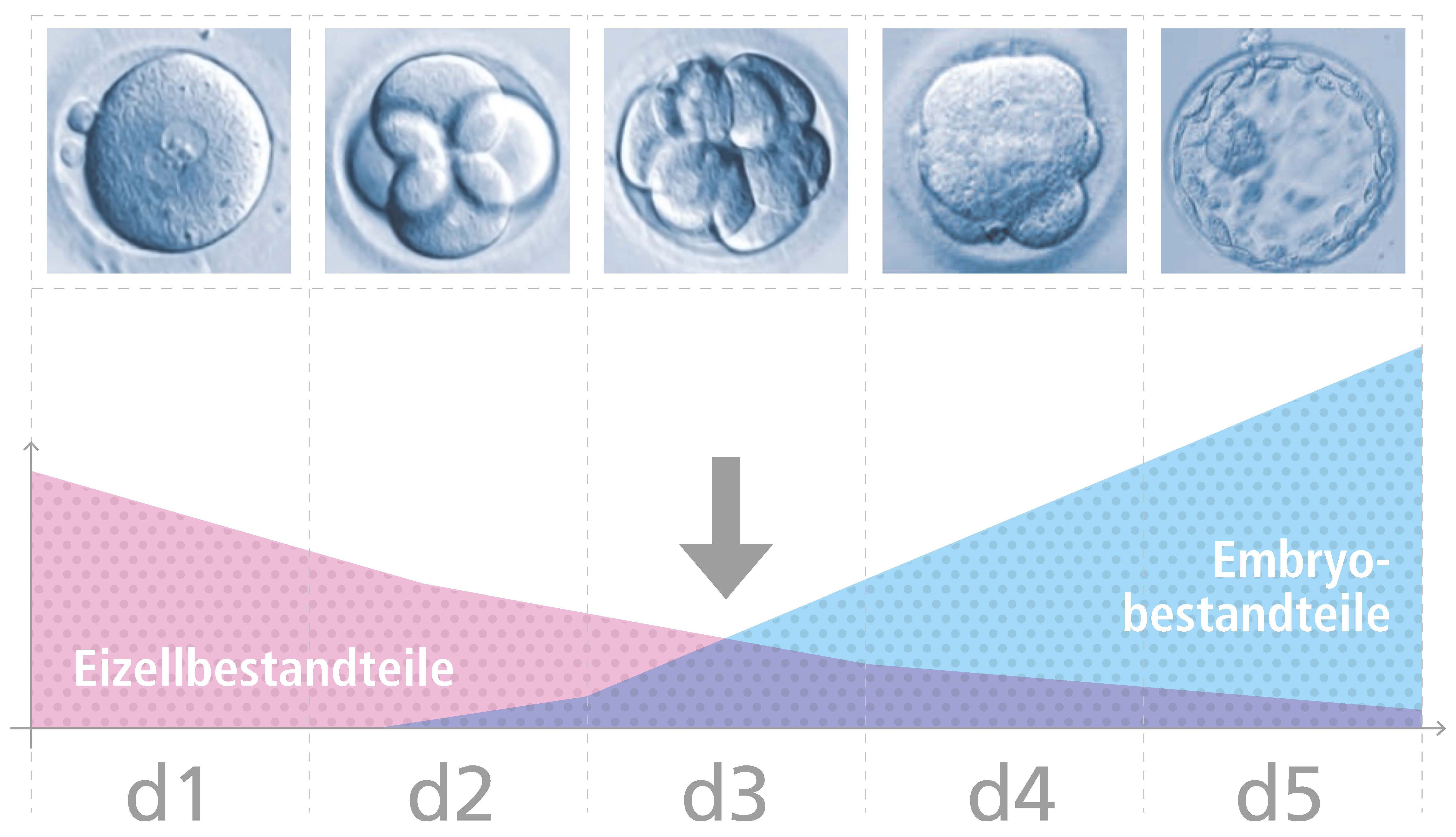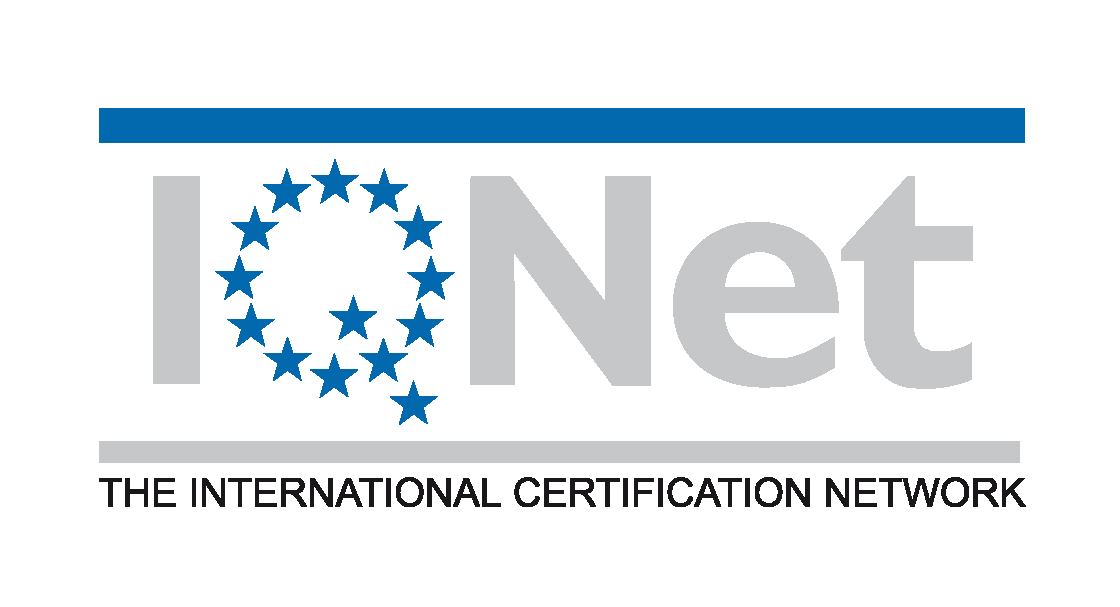Blastozystenkultur
Blastozystenkultur
Kern der Behandlung in unseren IVF-Zentren ist die Blastozystenkultur mit Beurteilung der Embryoqualität. Dabei erfolgt die Befruchtung der Eizellen mit den Spermien außerhalb des weiblichen Körpers, im Labor (IVF/ICSI/IMSI). Die befruchteten Eizellen werden in einen Inkubator ("Brutschrank") gegeben, wo sie in einem speziellen Kulturmedium zu Embryonen heranwachsen. Die Embryonalentwicklung kann mittels modernster Labortechnik sehr genau beobachtet und beurteilt werden. Haben die Embryonen ein bestimmtes Entwicklungsstadium (Blastozyste = einnistungsfähiger Embryo) erreicht, werden jene Embryonen (max. 2) ausgewählt und in die Gebärmutter der Frau eingebracht, welche das höchste Einnistungspotential aufweisen (siehe "Embryo-Transfer").
1. Warum ist ein Embryo-Transfer im Blastozystenstadium sinnvoll?
2. Vorteile einer Blastozystenkultur
│ © 2021 Shutterstock/Next Fertility IVF Prof. Zech
1. Warum ist ein Embryo-Transfer im Blastozystenstadium sinnvoll?
Bereits aus dem Begriff Reproduktionsmedizin lässt sich das Ziel dieses Fachgebiets der Medizin ableiten. Nämlich die Natur möglichst bis ins kleinste Detail zu verstehen und zu kopieren. Basierend auf dem heutigen Stand der Wissenschaft spielt hierbei die Blastozystenkultur eine zentrale Rolle. Bei einer Behandlung mit Blastozystenkultur (siehe schematische Darstellung oben) erfolgt die Befruchtung der Eizellen mit den Spermien außerhalb des weiblichen Körpers, im Labor (IVF/ICSI/IMSI). Die befruchteten Eizellen werden in einen Inkubator („Brutschrank“) gegeben, wo sie in einem speziellen Kulturmedium zu Embryonen heranwachsen. Die Embryonalentwicklung kann mittels modernster Labortechnik sehr genau beobachtet und beurteilt werden.
Haben die Embryonen ein bestimmtes Entwicklungsstadium (Blastozyste = einnistungsfähiger Embryo) erreicht, werden diese in die Gebärmutter der Frau eingebracht (siehe "Embryo-Transfer"). Dies erfolgt idealerweise am 5. Tag nach der Befruchtung, was jenem Zeitpunkt entspricht, an dem ein Embryo bei natürlicher Fortpflanzung vom Eileiter in die Gebärmutter gewandert ist und sich dann einnistet. Beim Transfer von Embryonen am Tag 2, bzw. Tag 3 nach der Follikelpunktion ist dies mindestens 2 Tage zu früh im Vergleich zur in vivo Situation. Warum? Die Reifung, Befruchtung und die ersten 3 Teilungszyklen sind v.a. abhängig von der Eizelle. Der genetische Einfluss des Samens kommt erst ab dem 3. Tag nach der Befruchtung zum Tragen und führt zur Aktivierung des embryonalen Genoms (siehe Grafik unten). Das heißt, eine Blastozystenkultur mit einem Transfer am Tag 5 ist nach heutigem Stand der Wissenschaft geeignet, um das Einnistungspotential des Embryos beurteilen zu können.
│ © 2021 Next Fertility IVF Prof. Zech
2. Vorteile einer Blastozystenkultur
Die Vorteile der Blastozystenkultur, mit einem Transfer am Tag 5 gegenüber einem Transfer am Tag 2/3, sind durch zahlreiche fundierte Publikationen belegt:
- Bessere Synchronisierung zwischen Uterus (Gebärmutter) und der frühen Embryonalentwicklung.
- Beschaffenheit und Qualität des Embryos ist erkennbar. Somit können jene Embryonen zum Transfer bereitgestellt werden, welche ein optimales Entwicklungspotential aufweisen.
- verminderte Kontraktion des Uterus ab dem Tag 5. Damit wird verhindert, dass die in die Gebärmutter zurück gesetzten Embryonen vermehrt abgestoßen werden.
- höhere Implantations-Chancen (Einnistung in der Gebärmutter)
Eine Kinderwunschbehandlung mit Blastozystenkultur bietet in Verbindung mit optimierten Stimulationsprotokollen und Embryo-Transfertechniken sehr gute Chancen auf das Erreichen einer intakten Schwangerschaft, die zur Geburt eines gesunden Kindes führt. Voraussetzung dafür ist ein top-ausgestattetes IVF-Zentrun mit erfahrenen Medizinern und Biologen.
1996 haben wir in unseren IVF-Zentren weltweit erstmals eine systematisch vorgenommene Blastozystenkultur eingeführt und setzten damit international Maßstäbe. Diese Behandlungsmethode zur Verbesserung der Schwangerschafts-Chancen wurde "State of the Art" in der Reproduktionsmedizin. Unser Team kann daher heute auf das Know-how aus über 20 Jahren erfolgreicher Kinderwunschbehandlungen mit Blastozystenkultur zurückgreifen.








